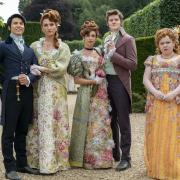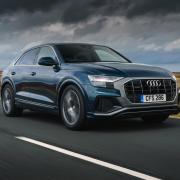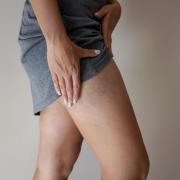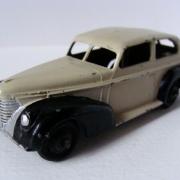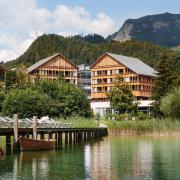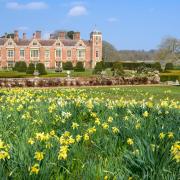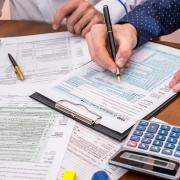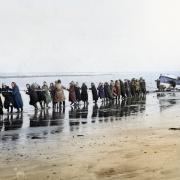Ahead of the big day on May 6, here’s our guide to this most historic event
A = Ascension
Charles became king at the moment of Queen Elizabeth II’s death. Royal succession follows the rule that ‘the king never dies’, meaning that government moves on despite the death of any sovereign. While a coronation is an occasion for pageantry and celebration, as well as a solemn religious ceremony, it’s not actually necessary for a monarch to be officially crowned for them to assume the position - Edward VIII, for instance, ruled without ever having a coronation.
Having remained the same for over a thousand years, traditionally, a coronation consists of six parts, including the recognition, oath, anointing, investiture, enthronement, and homage.
READ MORE: How the Queen’s coronation lifted the nation after WWII
B = Bank Holiday
While it is not unusual for a bank holiday to be granted for a Royal occasion such as this, this will be the first time a coronation takes place on the weekend in a century – the last being King Edward VI’s coronation in 1902 – normally they are held on a weekday. The bank holiday weekend is designed to bring communities together by encouraging them to host a number of events including street parties, with tool kits available on the Royal family website to help you arrange your own coronation celebrations. Meanwhile, on May 8, everyone is invited to participate in the Big Help Out by volunteering in their local community.

C = Coronation Chair
The Coronation Chair has been the centrepiece of coronations for 700 years. The ancient wooden structure, which contains numerous graffiti carvings made by Westminster schoolboys will be placed in the centre of the abbey from its home in the St George’s Chapel. It was built to house the Scottish Stone of Scone, also known as the Stone of Destiny. English monarchs have used it in their coronations since Edward I’s forces took it from Scotland in 1296. In 1996 the British Government decided to return it to Scotland when not in use for coronations and its home is now with the Scottish Crown Jewels in Edinburgh Castle.
READ MORE: What is the Stone of Destiny as it returns to England?
D = Dress
If King Charles follows tradition, he will wear a number of ceremonial robes starting with the Robe of State, also known as the Parliament Robe. This is replaced with the White Colobium Sindonis – a simpler gown worn for the anointing when symbols of status and majesty are removed, with the Supertunica placed over this and worn under the Imperial Mantle and the Stole Royale for the investiture. The Royal Robe is donned at the moment of crowning with all garments replaced with the Imperial Robe before the King leaves the abbey with the sceptre and orb.
Apart from the Supertunica and the Royal Robe, new robes are normally commissioned by the new monarch.
READ MORE: How will King Charles dress on the day of the coronation?

E = Emblem
Sir Jony Ive has designed a special coronation emblem. It will be used by the King and Queen Consort, and is a reflection of Charles’ love for nature, and the four nations of the UK. It ties together the English rose with the Welsh daffodil, the Scottish thistle, and the shamrock of Northern Ireland, weaving them together into the shape of the St Edward's Crown, in the colours of the Union Jack.
F = First for the monarchy
At 74 years of age, King Charles III will be the oldest person in British history to be crowned as sovereign.
READ MORE: The history of UK coronations throughout the ages
G = Guest list
The coronation is a state occasion, with the government funding the festivities and choosing the guest list. The attendees will include the royal family, prominent UK state figures like the prime minister and Parliament peers, as well as foreign dignitaries and royals from other countries.
The list is rumoured to be modest compared to Queen Elizabeth II's coronation – which attracted over 8,000 guests from nearly 130 nations – and only reach around 2,000.
READ MORE: How royal food and feasting have changed over the years
H = Homage
Once the sovereign dons the St Edward's Crown, the congregation celebrates with shouts of 'God save the King!'. King Charles will then be lifted onto another throne by archbishops and other peers, before he is paid homage by the Archbishop of Canterbury, the Prince of Wales, and other princes from royal lineage.

I = Investiture
This is the official crowning of King Charles following the coronation oath and the anointing with holy oil (the religious pinnacle of the event), all done while sitting on the Coronation Chair. The chair itself is a special relic, having been used by every British sovereign since 1626.
During the anointing the King will be shielded from view as this is said to be the most sacred part of the ceremony. A cross will be traced in holy oil blessed in Jerusalem, on his hands, head and heart.
King Charles III will receive the sceptre and rod, which represent the nation, as well as the orb, which symbolises the Christian world, before being crowned with the St Edward’s Crown.
READ MORE: The exact spot in Westminster Abbey where the King will be crowned
J = Jewels
During the ceremony the King will receive a coronation ring (dubbed the wedding ring of England), which he will wear on his right ring finger.
Rounding off the ceremony, Charles will don the Imperial State Crown, which will accompany him to the Buckingham Palace balcony. This piece features the Cullinan II diamond and was gifted to Edward VII on his 66th birthday by Transvaal – a former colony in the modern region of South Africa.

K = King’s procession
The King’s procession will involve the King and Queen Consort travelling from Buckingham Palace to Westminster Abbey in the gold state coach. The ornately gilded 1762 Gold State Coach last roamed the streets for the Queen’s Platinum Jubilee Pageant.
READ MORE: Matchbox unveils model Gold State Coach to mark coronation
L = Live entertainment
On Sunday May 7 – the day after the official service - there will be a concert and a light show at Windsor Castle. Organisers have teased the likes of Take That and Lionel Ritchie to be performing, but the official line up is still to be announced as we go to press. Visitors can also expect spoken-word acts from well-known stars, as well as a performance by The Coronation Choir – a group of amateur chorists, including LGBTQI+ singers, refugee choirs, and deaf singing choirs, which have all banded together specifically for the occasion. The choir will be accompanied virtually by other singing bands from all over the Commonwealth. A spectacular laser lightshow connected to the illumination of famous sites across the country will bring the event to a close.
READ MORE: Coronation Concert: Take That and Katy Perry to perform
M = Music
The ceremony will be accompanied by original music composed specially for the occasion, with 12 new pieces commissioned personally by the sovereign. Highlights include a brand-new Coronation Anthem by Andrew Lloyd Webber, as well as a Coronation March by Scottish film composer Patrick Doyle, and solo organ incorporating themes from Commonwealth countries by Iain Farrington.
The Palace has described the musical aspect of the proceedings as a blend of ‘tradition, heritage and ceremony with new musical voices of today, reflecting the King’s life-long love and support of music and the arts.’
N = Name
Even though these details are supposedly embargoed, the code names used for various events relating to the royal family are widely known among the public. The coronation ceremony plans are referred to by the code name Operation Golden Orb.
O = Oath
During the service delivered by the Archbishop of Canterbury, King Charles III will be asked to make an official coronation oath, declaring his intentions to ‘govern the United Kingdom and Commonwealth countries with law and justice.’
P = (Coronation) procession
Following the coronation ceremony this will take Charles and Camila back to Buckingham Palace, where the day’s proceedings will end with the King and Queen Consort appearing on the balcony, alongside the new Prince and Princess of Wales, as well as other senior working royals and their families.
READ MORE: Watch King Charles III's Coronation procession route

Q = Queen Consort Camilla
Queen Camilla will become the first queen consort to be crowned in Westminster Abbey in nearly a century. And the first to wear a ‘recycled’ crown.
Camilla has chosen to wear Queen Mary’s crown, which was originally commissioned for the 1911 coronation of King George V. It features 2,200 stunning diamonds, which will be joined by the Cullinan III, IV and V diamonds, which used to be a cherished part of Queen Elizabeth II's personal jewellery collection and were often seen worn by her as brooches.
R = The recognition
The opening ritual of the ceremony, the recognition involves the monarch standing in the middle of the abbey and facing all directions in turn, to 'show himself unto the people', before he is proclaimed the 'undoubted King' by the archbishop.
S = St Edwards Crown
Last worn by Queen Elizabeth II for her own big day, the ceremonial crown is made from solid gold, and features nearly 450 coloured gemstones, including sapphires, rubies, and tourmalines. It weighs more than two kilos, which is why it’s only worn during the official time of crowning.
T = Thrones
In keeping with royal tradition, which dictates that each sovereign should be seated on their unique throne during the coronation ceremony, King Charles III and Queen Consort Camilla will have new pieces made for the service. Charles’s new throne – which is rumoured to feature the Tudor Crown, in deviation from Queen Elizabeth II’s St Edward’s Crown throne logo – will be placed on a raised dais for the enthronement. Camilla, meanwhile, will be seated on a lower level on her own new throne to be crowned alongside the king.

U = Unique souvenir
There is plenty of memorabilia on offer from tea towels to decorative plates and mugs, but after the coronation of every sovereign, members of the royal family, alongside other household members, politicians and public servants, are given a special commemorative medal to mark the occasion.
READ MORE: Experts reveal coronation memorabilia that could make you rich
V = Viewing (figures)
While the exact programme details are yet to be confirmed, the coronation will be broadcast on TV for everyone who isn’t able to attend the Westminster Abbey procession. This will follow the example of Queen Elizabeth II’s coronation ceremony, which was watched by approximately 27 million people from the UK alone. It has been confirmed meanwhile that the coronation concert will be broadcast by BBC One, BBC iPlayer, BBC Radio Two and BBC Sounds.
READ MORE: King's Coronation day timings confirmed so far for May 6
W = Westminster Abbey
King Charles III will be the 40th monarch to be crowned at Westminster Abbey. Coronations have taken place at Westminster Abbey since William the Conqueror was crowned there in 1066. He wanted to be at the centre of government and near the principal palace at Westminster. As the burial place of his predecessor, it also cemented the legitimacy of his rule.
READ MORE: A look at the rich history of Westminster Abbey
X = Xenophilia
Part of Charles’ efforts to modernise his reign will be a more culturally and religiously diverse coronation ceremony, with a multi-faith congregation welcoming Jewish, Muslim, Buddhist, and Hindu figures alongside Christian representatives. In fact, shortly after he became sovereign, the king promised to uphold the numerous ‘religions, cultures, traditions and beliefs to which our hearts and minds direct us’.
Y = Ye olde pursuivant
Coronation organisers are revising the historic roles which have been traditionally involved in the service, and deciding which ones should be included.
In the past, these have included carriers of the Golden Spur and the White Wand, as well as a series of pursuivants. The practice of appointing pursuivants dates back to medieval times, when noble households appointed junior officers of arms for these positions. Two such notable officers of arms historically involved in the coronation service have been Rouge Dragon Pursuivant representing Wales, and the Unicorn Pursuivant of Scotland.
Z = Zzzzz’s
King Charles III has been offered the once-in-a-lifetime opportunity to spend the night before his coronation at the Palace of Westminster, sleeping in The State Bed following tradition which can again be traced back to William the Conqueror. The bed – which is truly fit for a king – currently resides in the State Apartments of Speaker’s House, was designed by Augustus Pugin and carved by John Braund in 1859. It’s made from walnut, and measures over seven foot wide and 12 foot high, complete with gilt inlay, impressive canopy, and the royal crest.



